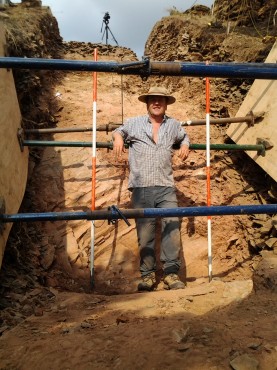
Paul Reilly
After a career in the IT Industry with IBM, I returned to archaeology as a Visiting Senior Research Fellow. Known principally as a pioneer of virtual archaeology, my involvement in archaeological computing actually began in 1982 when I started working on my Ph.D, in which I developed and applied proto-GIS technology and stochastic simulations to analyse the archaeological landscape of the Isle of Man. My fascination with the potential of IT to model, explore and present archaeological data and interpretation, has expanded ever since. As a researcher working in multidisciplinary teams with IBM, elements of my research applying data visualisation, modelling and exploration has not only influenced thinking in the field of archaeological computing, but has helped shape commercial research and development into the technology. For me, the most exciting technological developments are in the world of additive manufacturing, or 3D printing. For more than 20 years virtual archaeology has concentrated on the geometry and visual aspects of archaeological residues. Additive manufacturing techniques now enable unparalleled control of the modelling of the 'composition' of these remains, allowing other senses to be engaged,; touch, smell, hearing, perhaps even taste!
I am member of CAA, and as a past chairman of this international association, I participated in a Personal Histories session, sharing some previously unpublished personal events which helped shape the development of the sub-disciplines which now compose archaeological computing as we see it today. (see http://caaconference.org/2012/10/personal-histories-of-caa/)
In December 2013 I started collaborating with Hampshire County Council archaeologists to use LiDAR survey data to re-examine the archaeological landscape of the Dun Valley, which bisects the Hampshire-Wiltshire border, to enhance the county's Historic Environment Record.





